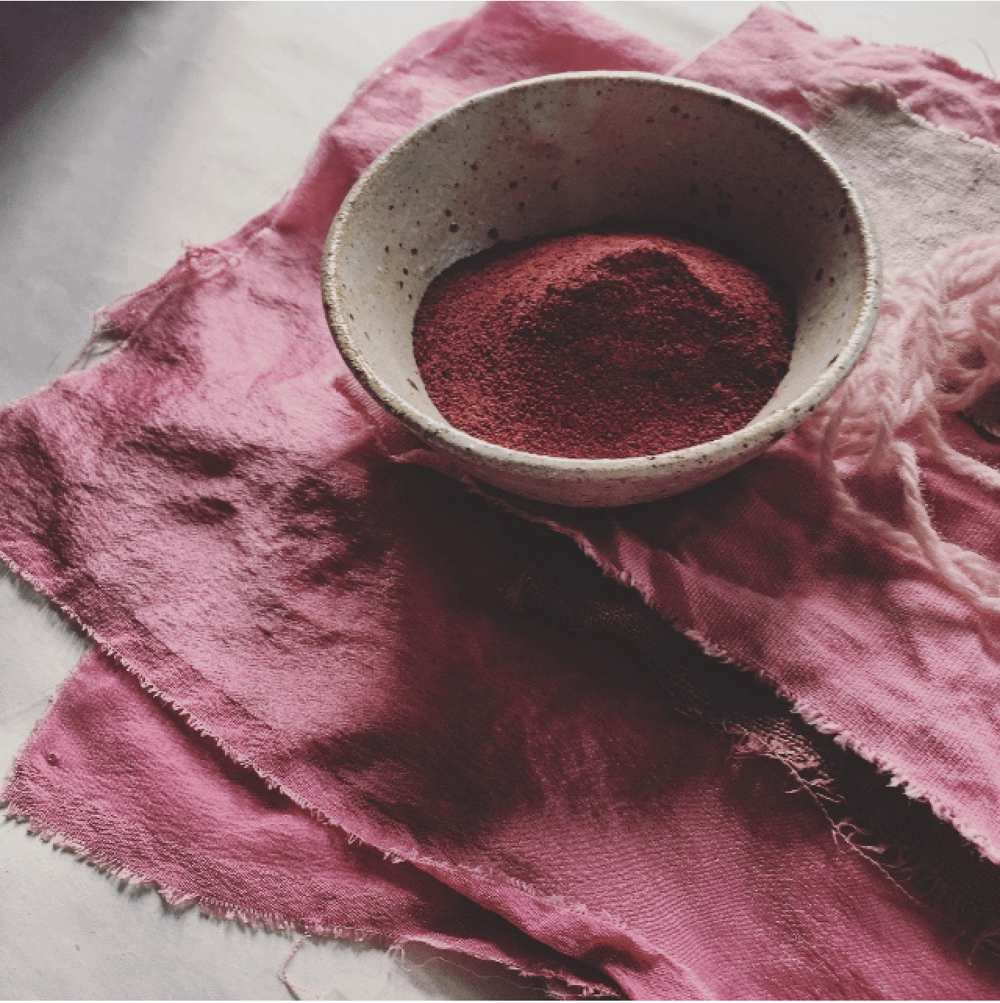Organic Lac Extract Powder
£14.50

Organic Lac extract (Kerria lacca)
Info/about:
Similar to the cochineal insect, yet from a different part of the world and a different insect, giving a softer and more muted range of colours.
Lac product has been known in India for long. The insects were recognised as lakšã (Sanskrit for a hundred thousand) implying the innumerable numbers of insects in one cluster).
Many lac insects and associated fauna have become endangered where either lac cultivation has either been abandoned or habitat destroyed.
Promoting and encouraging lac-culture may reduce environmental degradation and conserve diverse forests.
It is used as a resin and wax for varnishing wood and as a colourant in the food and drug industries.
Colours:
Raspberry pink to deep crimson and warm purple
Ingredients:
Kerria lacca
Recipe:
5% WOF - light pinks
10% WOF - Medium pinks/red
15% WOF - Deep crimsons
Put the required amount of powder in a bowl, add a few drops of water to make a paste and smooth out any lumps, before adding a few tea spoonfuls of water, to make an ink.
To make a dye, add enough water to create the space required for your fibres to move around freely in. Boil for 60 mins to dissolve the lac. Add fibres and heat for 60 mins until the desired depth of colour is acquired. Leave to saturate overnight for deeper shades. Remove and wash, rinse, air dry.
Ref Botanical Inks book for further info on dyeing instructions for cellulose/protein fibres, mordanting etc..
Fastness:
Strong light and wash fastness on protein fibres.
Less light and wash fast on cellulose fibres.
Mordants/Modifiers:
Acids turn dye to red. A little acidic modifier can offer more vibrant colours.
Alkali transform dye to warm purple
Iron shifts colours to deep purple
Ph sensitivity:
Very sensitive
Once modified, dyed fibre can change again after washing
Origin:
Found throughout: India, south east Asia, Nepal, Burma, Bhutan and south China
Our lac is cultivated in and sourced from: India
Extraction technique:
Lac is the resinous secretion of the Kerria lacca species of lac insects.
Female lac insects colonise host trees, most commonly on the banyan (Ficus benghalensis, or F. indica) and juniper trees (Rhamnus jujuba), and secrete a resinous pigment which covers the branches of the tree. This resin harvested as "sticklac" and then crushed, sieved and extracted several times in water to remove impurities, resulting in a product known as seedlac, which still contains 3–5% impurities. This is then fully refined into shellac by heat treatment.broken off to make shellac.
Transport:
Air courier from India to UK
Shipped from Botanical Inks in Bristol via Royal Mail
Packaging:
Packaged in natural unbleached food grade waxed paper and secured natural plant gum paper tape and 100% natural unbleached twine and placed inside a biodegradable corn starch mailer bag - safe for health and environment.
